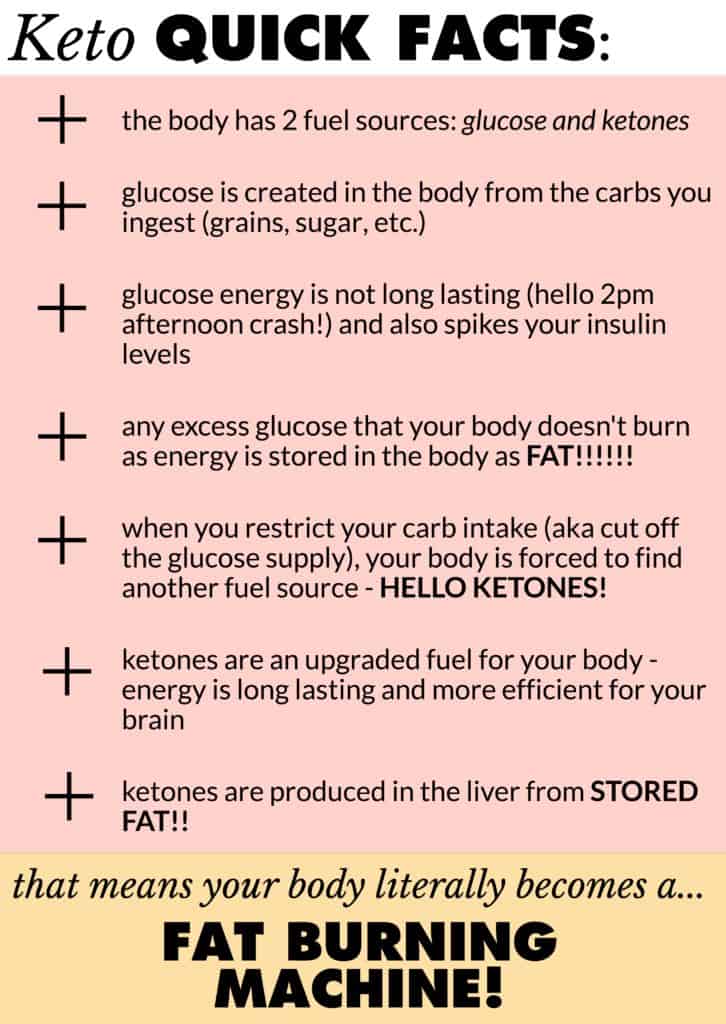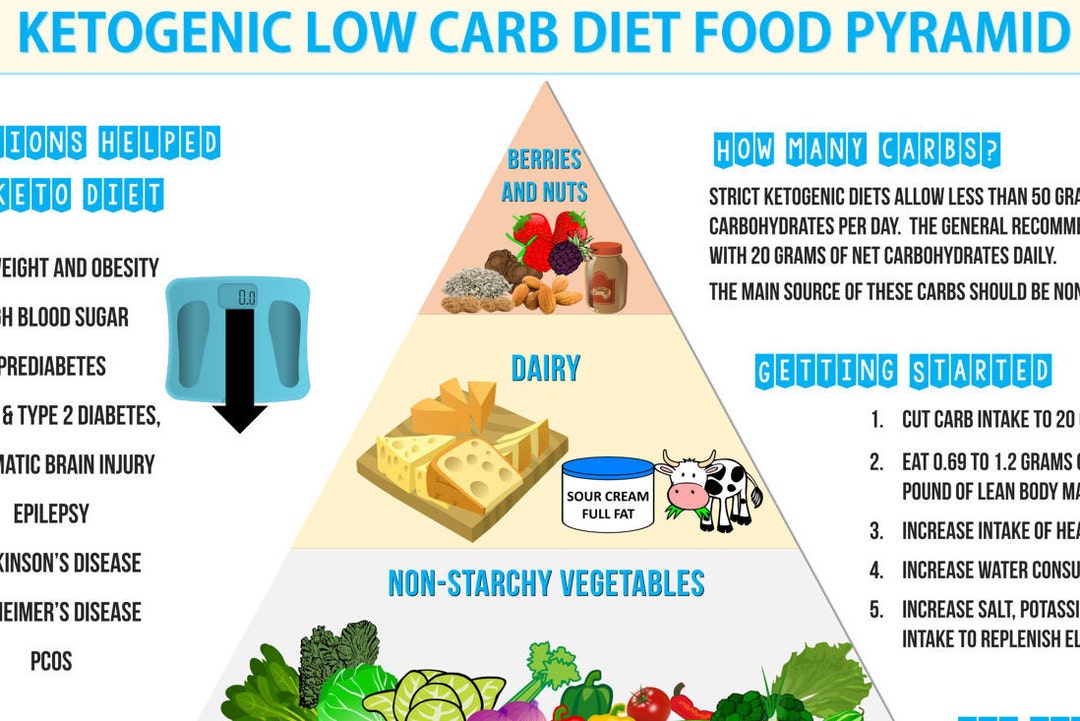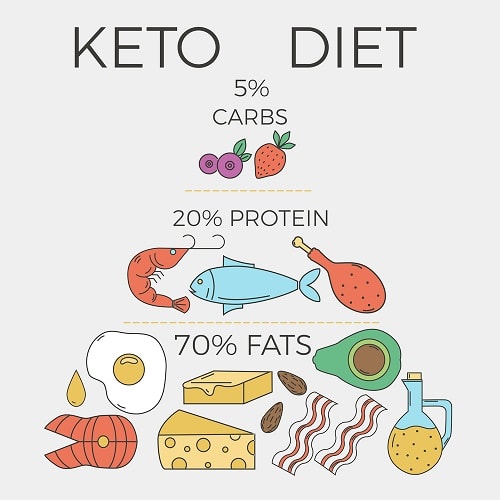Discover the secrets to unlocking weight loss success with our comprehensive guide to the keto diet for beginners. Dive in now!
Table of Contents
- Introduction to the Keto Diet
- Getting Ready for Keto
- Understanding What You Can Eat
- Creating A Simple Keto Meal Plan
- Common Mistakes to Avoid
- Tracking Your Progress
- Sticking to Keto in a Fun Way
- Safety and Health Considerations
- Keto-related Activities and Resources
- Conclusion: Embracing Keto as a Beginner
- FAQs
Introduction to the Keto Diet
Have you ever heard of the keto diet for beginners? It’s a popular way of eating that focuses on consuming more fats and fewer carbs. If you’re curious about starting the keto diet but aren’t sure where to begin, you’re in the right place! In this guide, we’ll break down the basics of the keto diet and why it’s a great option for beginners like you.
What is a Keto Diet?
The keto diet is all about changing the way you eat to help your body burn fat for energy instead of carbs. This means you’ll be enjoying delicious foods like butter, avocados, and cheese, while saying goodbye to bread, pasta, and sugary treats. By following a keto diet plan, your body goes into a state called “ketosis,” where it efficiently uses fat for fuel.
Why Try Keto?
So, why are so many beginners drawn to the keto diet? Well, one big reason is weight loss. By cutting down on carbs and focusing on fats, many people find it easier to shed excess pounds. Plus, some folks feel more energized and focused on a keto diet, making it a great choice for those looking to improve their overall well-being.
Getting Ready for Keto
Before diving into the world of keto, it’s essential to set simple and achievable goals. These goals can help you stay motivated and make the process of starting a keto diet less overwhelming. Start with small milestones and gradually work your way up!
Clean Out Your Pantry
One of the best ways to prepare for a keto diet is to clear out your pantry of any high-carb temptations. By removing foods like bread, pasta, and sugary snacks from your home, you’ll be less likely to give in to cravings. Out of sight, out of mind!
Understanding What You Can Eat
When following a keto diet, it’s essential to know which foods you can enjoy and which ones to avoid. By focusing on specific types of food, you can create tasty meals while staying in line with your dietary goals.

Image courtesy of cleanketolifestyle.com via Google Images
Keto-Friendly Foods
Keto-friendly foods are the foundation of a successful keto meal plan. These include:
- Meats like chicken, beef, and fish
- Certain veggies such as spinach, broccoli, and cauliflower
- Cheeses like cheddar, mozzarella, and cream cheese
- Healthy fats like avocados, nuts, and olive oil
By incorporating these foods into your meals, you can create a variety of delicious and satisfying dishes while keeping your carb intake low.
Foods to Avoid
On the flip side, there are certain foods that you should steer clear of when following a keto diet. These include:
- Bread and other wheat-based products
- Pasta and other high-carb grains
- Sugary snacks and desserts
Avoiding these carb-heavy foods is crucial in maintaining a state of ketosis, where your body burns fat for fuel instead of carbohydrates.
Creating A Simple Keto Meal Plan
Now that you understand what a keto diet is and why it can be beneficial, let’s get into creating a simple meal plan that will kickstart your journey towards a healthier lifestyle. Planning your meals ahead of time is crucial to staying on track and avoiding temptation.
Sample Meals for Breakfast, Lunch, and Dinner
For breakfast, you can enjoy a delicious omelette with spinach and feta cheese, paired with a side of avocado slices. This meal is packed with healthy fats and protein to keep you energized throughout the morning.
For lunch, a grilled chicken salad with a variety of colorful veggies like bell peppers, cucumbers, and cherry tomatoes can be a satisfying and nutritious option. Drizzle some olive oil and sprinkle some feta cheese for added flavor.
When dinner time rolls around, consider cooking up a juicy salmon fillet seasoned with herbs and served with a side of roasted asparagus and cauliflower rice. This meal is not only flavorful but also full of essential nutrients.
The Importance of Planning
Planning your meals in advance can make your keto journey much smoother. By knowing what you’ll be eating each day, you can avoid grabbing unhealthy snacks on the go or succumbing to the temptation of ordering takeout.
Take some time each week to plan out your meals, create a shopping list, and prep ingredients ahead of time. This will help you stay organized and committed to your keto diet goals.
Common Mistakes to Avoid
When starting a keto diet, it’s essential to remember that while healthy fats are a crucial component of the plan, consuming too much of them can hinder your progress. Try to balance your fat intake with protein and vegetables to ensure you’re getting a well-rounded diet.

Image courtesy of cleanketolifestyle.com via Google Images
Forgetting to Stay Hydrated
One common mistake beginners make on a keto diet is not drinking enough water. Staying hydrated is vital for overall health and can help prevent side effects like dehydration and headaches. Aim to drink plenty of water throughout the day to support your body while on a keto diet.
Tracking Your Progress
Monitoring your progress on the keto diet is essential to stay on track and see how your body is responding to the changes you’re making. Without getting overwhelmed, here are some simple ideas for beginners to keep track of their journey:
Journaling Your Journey
Consider keeping a food diary or a journal to note down what you eat, how you feel after meals, and any changes in your body. This can help you see patterns and understand what works best for you on the keto diet.
Paying Attention to Your Body
It’s important to listen to your body and notice how you feel energy-wise and in terms of your overall health. Pay attention to how different foods make you feel and adjust your meal plan accordingly. Your body knows best what it needs!
7-Day Keto Diet Meal Plan
In this section, we will provide you with a simple and easy-to-follow 7-day keto meal plan that is perfect for beginners. This meal plan will give you an idea of what a week on the keto diet could look like, making your journey into the keto lifestyle smooth and enjoyable.
Day-by-Day Plan
Let’s break down each day of your 7-day keto meal plan with delicious and nutritious meal ideas:
Day 1:
Breakfast: Scrambled eggs with spinach and feta cheese
Lunch: Grilled chicken Caesar salad with avocado
Dinner: Baked salmon with roasted asparagus
Day 2:
Breakfast: Keto-friendly smoothie with almond butter and coconut milk
Lunch: Zucchini noodles with pesto and cherry tomatoes
Dinner: Beef lettuce wraps with salsa and guacamole
Day 3:
Breakfast: Chia seed pudding with unsweetened coconut flakes
Lunch: Turkey and avocado lettuce wraps
Dinner: Cauliflower crust pizza with toppings of your choice
Day 4:
Breakfast: Bacon and cheese omelette
Lunch: Tuna salad in a lettuce cup
Dinner: Pork chops with sautéed kale and mushrooms
Day 5:
Breakfast: Greek yogurt with berries and chopped nuts
Lunch: Shrimp and avocado salad with lime dressing
Dinner: Chicken stir-fry with broccoli and bell peppers
Day 6:
Breakfast: Almond flour pancakes with sugar-free syrup
Lunch: Egg salad lettuce wraps with cucumber slices
Dinner: Steak with roasted Brussels sprouts
Day 7:
Breakfast: Smoked salmon roll-ups with cream cheese and cucumber
Lunch: Keto-friendly chili with ground beef and beans
Dinner: Spaghetti squash with meat sauce and Parmesan cheese
Remember to drink plenty of water throughout the day and listen to your body’s hunger cues. This 7-day keto meal plan offers a variety of delicious and satisfying options to keep you on track with your keto journey.
Sticking to Keto in a Fun Way
Snacking on the keto diet can be enjoyable and delicious. Instead of reaching for high-carb options, why not try some keto-friendly snacks? Nuts like almonds or macadamias, cheese slices, or even some celery sticks with peanut butter can be satisfying choices. These snacks can keep you energized and full between meals while staying on track with your keto goals.

Image courtesy of www.etsy.com · In stock via Google Images
Involving Friends and Family
Following a keto diet doesn’t have to be a solo journey. Involving your friends and family can make it more fun and provide a strong support system. Encourage your loved ones to try keto-friendly recipes together or go on walks to stay active. Having a buddy to share your struggles and successes with can make the process more enjoyable and motivating.
Safety and Health Considerations
When it comes to trying a keto diet, it’s essential to think about the safety and health considerations, especially for kids. Here are some important things to keep in mind:
| Topic | Information |
|---|---|
| What is Keto Diet? | The ketogenic diet is a high-fat, low-carbohydrate diet that is designed to help the body enter a state of ketosis. |
| Benefits of Keto | – Weight loss – Improved mental clarity – Increased energy levels – Better blood sugar control – Reduced inflammation |
| Allowed Foods | – Meat – Fish – Eggs – Low-carb vegetables – Healthy fats like avocado and olive oil |
| Avoided Foods | – Sugar – Grains – Starchy vegetables – Processed foods – High-carb fruits |
| Meal Plan Example | – Breakfast: Scrambled eggs with spinach – Lunch: Grilled chicken salad with avocado – Dinner: Salmon with asparagus – Snacks: Almonds or cheese |
Check with a Doctor
Before making any major changes to your diet, like starting a keto plan, it’s a good idea to talk to a doctor. Since kids are still growing, it’s crucial to ensure that the diet is safe and appropriate for their unique needs. A doctor can provide guidance and make sure that the keto diet won’t interfere with a child’s growth and development.
Nutrient-rich Keto Options
While following a keto diet, it’s important to choose foods that are packed with essential nutrients to support a child’s overall health and well-being. Look for keto-friendly options that are rich in vitamins, minerals, and other key nutrients that are vital for growth. Always prioritize nutrient-dense foods to make sure that kids are getting the proper nourishment they need while on the keto diet.
Keto-related Activities and Resources
For kids who are interested in learning more about the keto diet, there are many resources available to help deepen their understanding and maintain their interest. Here are some activities and resources that can make the keto journey even more engaging:

Image courtesy of fastingwell.com via Google Images
Educational Resources
If you’re looking to delve deeper into the world of keto, there are plenty of books and websites that can provide valuable information. Books like “The Keto Kids Cookbook” or “Keto for Kids” offer recipes and tips specifically geared towards children. Safe websites like KidsHealth.org can also provide reliable information on the keto diet in an easy-to-understand format.
Interactive Keto Games and Apps
Learning can be fun with interactive games and apps that teach kids about healthy eating and the principles of the keto diet. Apps like “KetoDiet App” or “Keto Quiz Challenge” offer engaging ways for kids to test their knowledge and learn more about the benefits of eating keto-friendly foods. These interactive tools can make the learning process enjoyable and exciting for kids.
Conclusion: Embracing Keto as a Beginner
Starting the keto diet as a beginner may seem daunting at first, but with the right approach and mindset, you can successfully navigate this new way of eating. Remember, it’s all about taking small steps and being consistent on your journey towards a healthier lifestyle. Here’s a quick recap of what we’ve covered to help you embrace the keto diet as a beginner:
Getting Ready for Keto
Before diving into the keto diet, set simple and achievable goals for yourself. Clearing out your pantry of high-carb foods can also help set you up for success.
Understanding What You Can Eat
Focus on filling your plate with keto-friendly foods like meats, veggies, and cheese, while avoiding high-carb items such as bread, pasta, and sugary snacks.
Creating A Simple Keto Meal Plan
Planning your meals ahead of time and incorporating easy-to-follow keto recipes can help you stay on track with your new eating habits.
Common Mistakes to Avoid
Be mindful of going overboard with fats and don’t forget the importance of staying hydrated while on the keto diet.
Tracking Your Progress
Keep a food diary to monitor how different foods make you feel and pay attention to changes in your energy levels and overall health.
By sticking to a 7-day keto meal plan, finding fun ways to keep the diet exciting, and prioritizing your safety and health, you can make the most out of your keto journey. Remember, it’s essential to consult with a doctor before making any major changes to your diet, especially if you’re still growing. And don’t forget to explore educational resources, games, and apps that can support your keto lifestyle.
Embrace the keto diet as a beginner, take it one day at a time, and enjoy the positive changes it can bring to your health and well-being!
FAQs
What is the Keto Diet?
The keto diet, short for ketogenic diet, is a low-carb, high-fat eating plan that focuses on burning fat for fuel instead of carbohydrates. By drastically reducing your carb intake and replacing it with healthy fats, your body enters a state called ketosis, where it becomes more efficient at burning fat for energy.
Why Try Keto?
Many people try the keto diet for various reasons, such as weight loss, increased energy levels, and improved mental clarity. By following a keto diet, you may experience reduced cravings, stabilized blood sugar levels, and better overall health.
How do I Start the Keto Diet?
To start the keto diet, begin by removing high-carb foods from your pantry and focusing on incorporating more healthy fats, moderate protein, and low-carb vegetables into your meals. Set realistic goals, plan your meals ahead of time, and stay hydrated to support your body through the transition.
What Can I Eat on the Keto Diet?
Keto-friendly foods include meats, fish, eggs, cheese, nuts, seeds, low-carb vegetables like spinach and broccoli, and healthy fats like avocado oil and coconut oil. It’s essential to avoid high-carb foods like bread, pasta, rice, and sugary snacks to maintain ketosis.
Do I Have to Count Calories on the Keto Diet?
While some people may choose to track their calorie intake on the keto diet, focusing on eating the right types of foods in appropriate portions can be more beneficial. By listening to your body’s hunger cues and eating until you are satisfied, you can still see successful results on the keto diet without strict calorie counting.
Can Kids Follow the Keto Diet Safely?
Before introducing any significant dietary changes for kids, it’s crucial to consult with a healthcare provider to ensure that the keto diet is safe and appropriate for their age and health status. Children have different nutritional needs, and it’s essential to prioritize nutrient-dense foods that support their growth and development.





